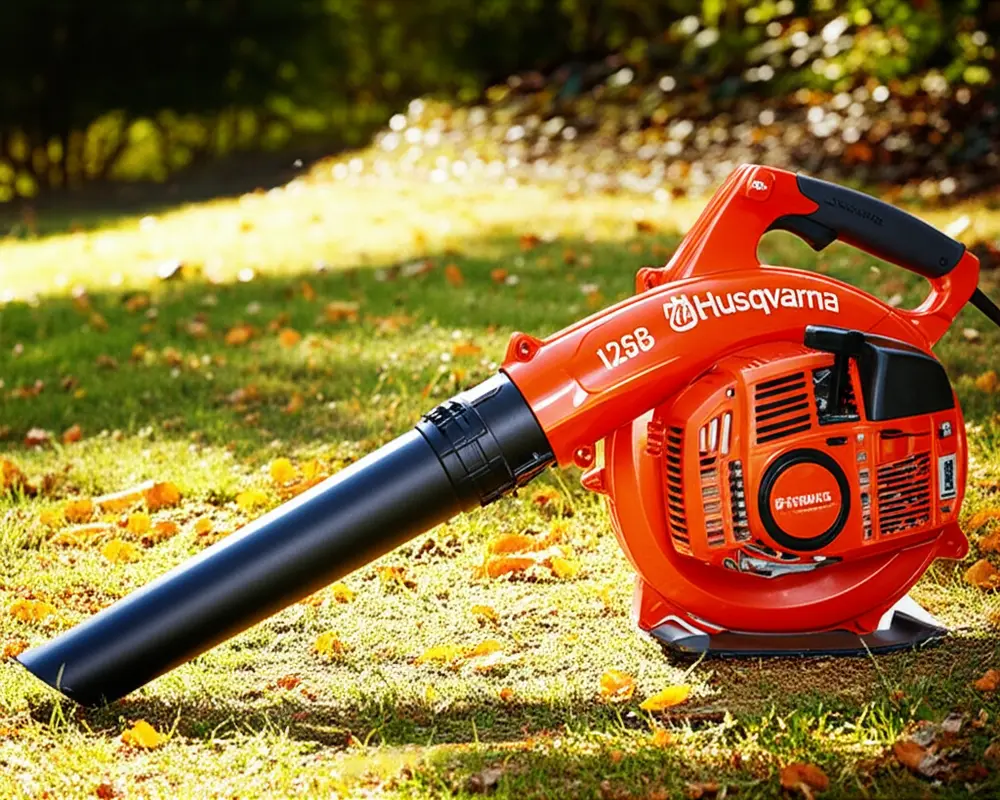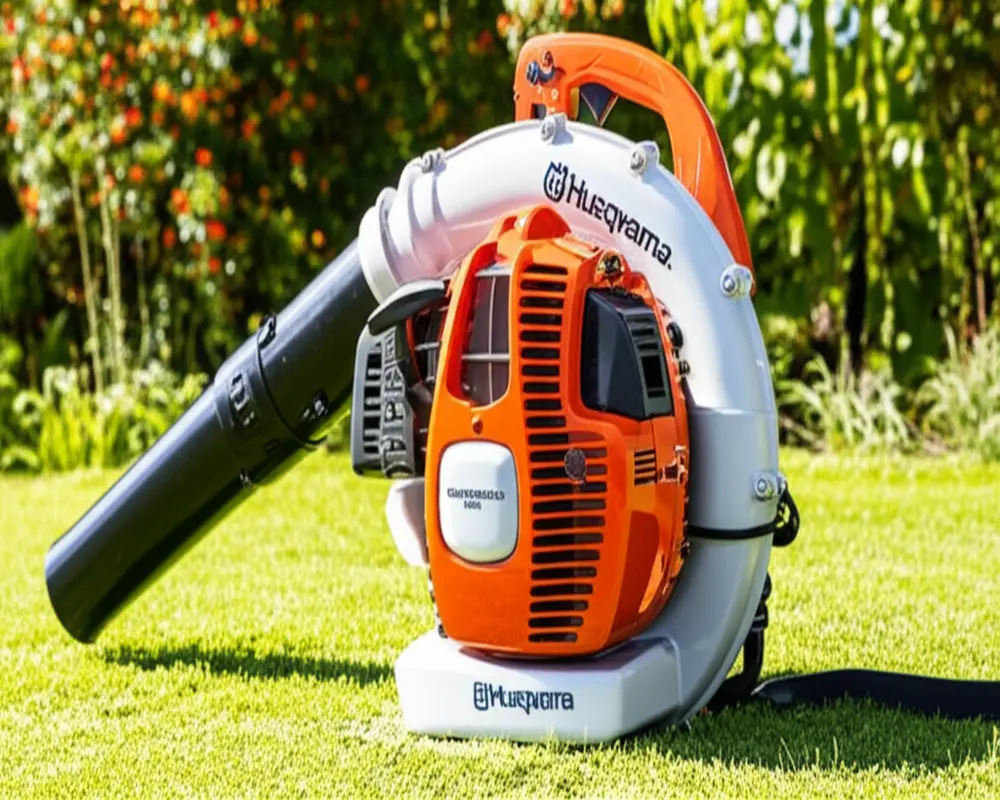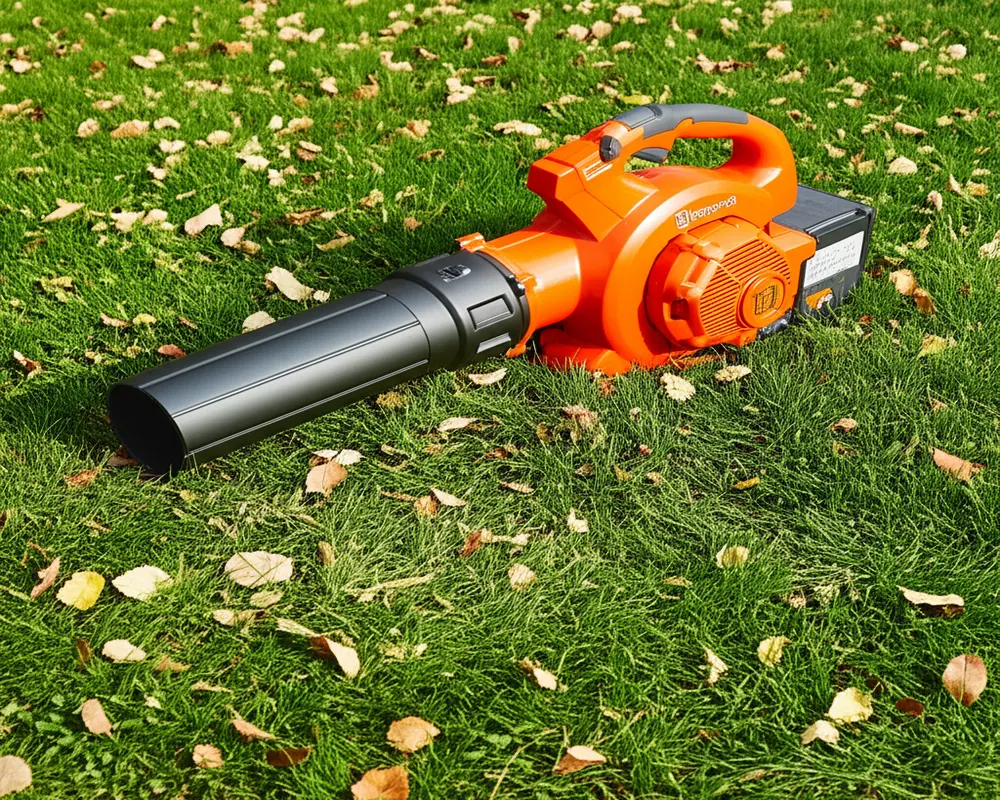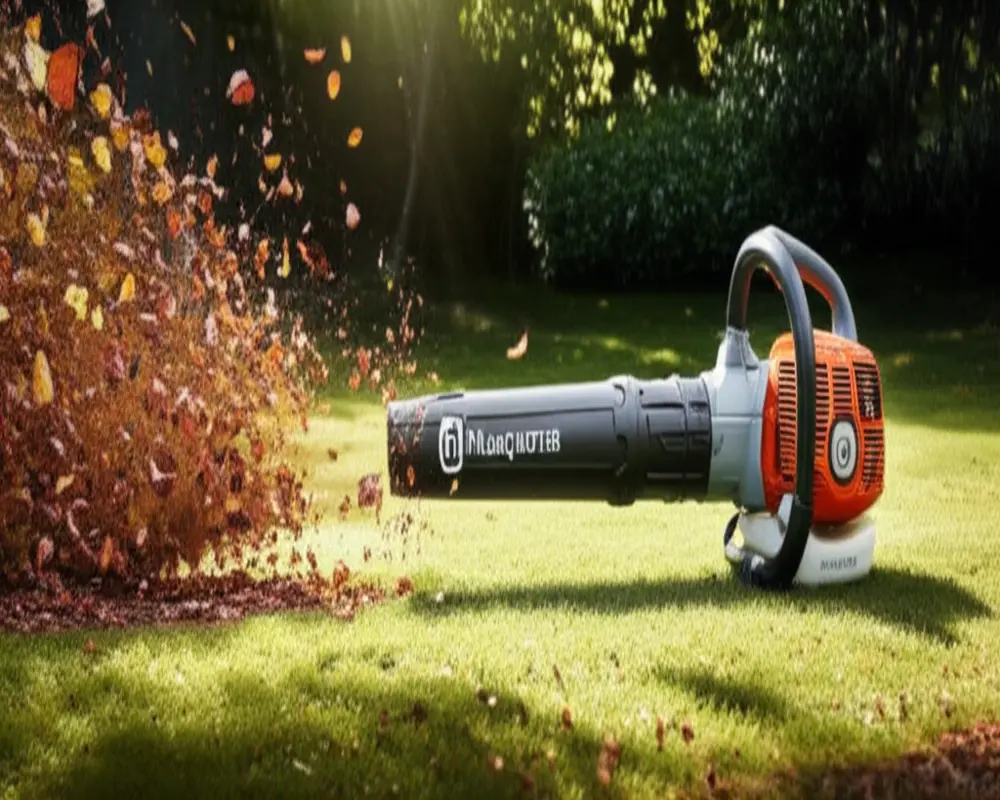The Ultimate Guide to Husqvarna Leaf Blowers in 2025: Find Your Perfect Match
When it comes to maintaining a pristine yard, choosing the right leaf blower is crucial. Husqvarna leaf blowers have built a reputation for reliability, power, and innovation in outdoor power equipment. This comprehensive guide explores the top Husqvarna leaf blower models in 2025, providing detailed reviews, comparisons, and expert buying advice to help you select the blower that perfectly fits your needs.
Thank you for reading this post, don't forget to subscribe!1. Introduction: Why Choose a Husqvarna Leaf Blower?
Husqvarna’s legacy in outdoor power tools spans over a century, marked by a commitment to manufacturing equipment that balances power, durability, and ergonomic design. Their leaf blowers are engineered to perform efficiently in a variety of yard conditions, whether you’re clearing light debris from a small lawn or tackling heavy leaves across a large property.
With a strong focus on user experience, Husqvarna integrates advanced technologies like the X-Torq engine for reduced emissions and fuel consumption, and LowVib to minimize operator fatigue. This guide will walk you through everything you need to know to make an informed choice on your next Husqvarna leaf blower, from understanding key performance metrics to maintenance tips and model comparisons.
2. Understanding Leaf Blower Performance Metrics: What the Numbers Mean for Husqvarna Models
To appreciate the capabilities of a Husqvarna leaf blower, it’s essential to understand the key performance metrics manufacturers list. These numbers translate directly to real-world performance and user comfort.
CFM (Cubic Feet per Minute) measures the volume of air the blower moves. A higher CFM indicates the blower can move more leaves and debris in less time, ideal for larger areas.
MPH (Miles Per Hour) refers to the airspeed coming out of the blower’s nozzle, which influences the force applied to debris. Stronger airspeed helps in dislodging stuck leaves and heavier materials.
For gas-powered models, engine size, measured in cubic centimeters (cc), denotes the power output. Battery models specify voltage (V) and Amp-Hours (Ah), which indicate power potential and battery capacity respectively.
Ergonomics and weight play a significant role in user comfort, especially for prolonged use. Husqvarna designs blowers to balance power with manageable weight and vibration control.
Noise levels, measured in decibels (dB), are important for comfort and compliance with local regulations. Battery models tend to be quieter, making them well-suited for noise-sensitive neighborhoods.
Starting mechanisms vary from traditional pull-starts in gas models to instant electric starts in battery-powered blowers, enhancing convenience and ease of use.
3. Husqvarna Leaf Blower Types: Selecting the Right Configuration for Your Needs
Handheld Gas Leaf Blowers
Handheld gas blowers offer portability and sufficient power for small to medium yards. Their light frame facilitates easy maneuvering, but they do require regular maintenance and produce more noise compared to battery models.
Popular models like the Husqvarna 125B and 125BVx exemplify this category, balancing affordability with reliable performance. These models typically feature engines around 25 cc and deliver airspeeds up to 130 MPH with CFMs around 400, suitable for light to moderate debris clearing.

Backpack Gas Leaf Blowers
For larger properties or professional use, backpack gas leaf blowers provide enhanced power and longer run times. They are designed to distribute weight evenly across the back, reducing strain during extended use. However, they come at a higher cost and increased weight compared to handheld models.
Models such as the 350BT, 580BTS, and 525BX deliver exceptional airflow, with CFMs ranging from 600 to over 900 and airspeeds exceeding 180 MPH, making them capable of handling heavy, wet debris efficiently.

Battery-Powered Leaf Blowers (Handheld & Backpack)
Battery-powered blowers offer a quieter, more eco-friendly alternative, ideal for residential areas with noise ordinances or where fossil fuel emissions are a concern. Their lightweight design often leads to greater comfort, though they may have shorter run times and require charging breaks.
Models like the 320iB handheld and 525iB backpack blowers feature lithium-ion batteries with voltages up to 60V and varying amp-hour capacities that determine usage duration. These models are perfect for light debris and quick cleanup tasks.

4. Deep Dive: Top-Rated Husqvarna Leaf Blower Models (In-Depth Reviews & Performance Analysis)
Let’s take a closer look at some of the standout Husqvarna leaf blowers available in 2025, highlighting specs, features, and user suitability.
Husqvarna 125B Handheld Leaf Blower
The 125B is a lightweight handheld gas blower ideal for homeowners with small to mid-sized yards. It boasts a 28.5 cc X-Torq engine that reduces fuel consumption and emissions. It delivers up to 430 CFM and 130 MPH airspeed, sufficient for typical leaf blowing tasks.
Its low vibration design enhances user comfort during extended use, and the easy-start system ensures quick readiness. Pricing typically hovers around $200 to $250, offering excellent value for casual users.
Husqvarna 350BT Backpack Leaf Blower
The 350BT backpack blower is designed for heavy-duty yard work and professional landscapers. Powered by a 50.2 cc engine, it produces airflow up to 650 CFM at speeds of 170 MPH. Its backpack design distributes weight ergonomically, reducing fatigue.
This model features LowVib technology and a throttle lock for improved control and comfort. Expect to pay approximately $650 to $700, reflecting its premium capabilities.
Husqvarna 580BTS Backpack Leaf Blower
The 580BTS stands at the top of Husqvarna’s gas backpack lineup, suited for the most demanding jobs. Its 75.6 cc engine delivers airflow exceeding 900 CFM and airspeed up to 195 MPH, capable of clearing dense, wet debris with ease.
It incorporates advanced vibration dampening and a robust frame, ensuring durability and operator comfort. Pricing is typically in the $900+ range, justified by its professional-grade performance.
Husqvarna 525iB Battery Backpack Leaf Blower
This battery-powered backpack blower combines Husqvarna’s ergonomic expertise with modern lithium-ion technology. Operating quietly with zero emissions, it provides up to 580 CFM and 110 MPH airspeed, suitable for noise-sensitive environments.
Its 60V battery packs deliver up to 40 minutes of run time per charge, with quick-swap capability for extended use. The cost is around $800, balancing eco-friendliness with professional power.
5. Husqvarna Leaf Blower Comparisons: Making the Right Choice
Choosing the right model depends on your yard’s size, debris type, and personal preferences. Below is a comparison table summarizing key specs of select Husqvarna models:
| Model | Type | Engine/Battery | CFM | MPH | Weight (lbs) | Noise Level (dB) | Price Range (USD) |
|---|---|---|---|---|---|---|---|
| 125B | Handheld Gas | 28.5 cc X-Torq | 430 | 130 | 10.7 | 97 | $200-$250 |
| 350BT | Backpack Gas | 50.2 cc X-Torq | 650 | 170 | 23.1 | 103 | $650-$700 |
| 580BTS | Backpack Gas | 75.6 cc X-Torq | 900+ | 195 | 24.7 | 106 | $900+ |
| 525iB | Backpack Battery | 60V Lithium-ion | 580 | 110 | 21.2 | 70 | $800 |
Compared to competitors like Stihl, Echo, and Ego, Husqvarna models often excel in balancing power and ergonomic design. For a detailed Husqvarna vs Stihl comparison, see this expert review.
6. Essential Buying Considerations & What to Look For
Selecting the ideal leaf blower involves matching the tool’s capabilities to your property size and debris type. For small, light tasks, handheld gas or battery models suffice, whereas large properties with heavy leaves benefit from backpack blowers.
Consider your preferred fuel or power source. Gas models offer longer run times but require fuel mixing and maintenance, while battery blowers offer quiet operation and reduced emissions but need charging management.
Ergonomic features such as weight distribution, vibration reduction, and handle comfort directly affect user fatigue and operational ease.
Noise regulations are critical, especially in residential areas. Battery-powered blowers typically produce less noise, complying more easily with local ordinances. The EPA provides guidelines on acceptable noise levels, which can be reviewed here.
Lastly, budget your purchase considering initial cost, maintenance, and long-term value. Husqvarna offers warranty and authorized service options that add peace of mind.
7. Maintaining Your Husqvarna Leaf Blower for Longevity
Proper maintenance extends the lifespan and performance of your leaf blower. For gas models, regular care includes using the correct fuel mix, cleaning or replacing air filters, checking spark plugs, and carburetor adjustments. Off-season storage should involve draining fuel and protecting components from moisture.
Battery models require attention to charging protocols, avoiding over-discharge, and storing batteries in cool, dry places. Cleaning vents and keeping the blower free from debris helps maintain airflow and cooling.
Common troubleshooting may involve checking for fuel blockages, inspecting battery charge levels, or cleaning spark plugs. Always use protective gear while operating and servicing your equipment to ensure safety.
8. Frequently Asked Questions (FAQs)
- Are Husqvarna leaf blowers reliable and built to last?
- Yes, Husqvarna is renowned for manufacturing durable outdoor tools with high-quality materials and rigorous testing.
- Which Husqvarna leaf blower is the most powerful?
- The 580BTS backpack model is the most powerful, with a 75.6 cc engine delivering over 900 CFM airflow.
- What type of fuel do gas leaf blowers use?
- Most Husqvarna gas leaf blowers use a 50:1 mix of gasoline and two-stroke engine oil.
- How do I start my gas leaf blower?
- Typically, you prime the engine, set the choke, pull the starter cord firmly, then adjust the choke as the engine warms.
- Where can I find replacement parts and service for Husqvarna leaf blowers?
- Authorized Husqvarna dealers and service centers provide genuine parts and expert repairs. Visit Husqvarna’s official website for dealer locations.
- What is the typical lifespan of a Husqvarna leaf blower?
- With proper maintenance, Husqvarna leaf blowers can last 10 years or more.
- Do Husqvarna BVx models have vacuum or mulching capabilities?
- Yes, some BVx models feature vacuum and mulching functions, making them versatile for yard cleanup.
9. Conclusion: Making Your Confident Choice
Choosing the right Husqvarna leaf blower boils down to understanding your yard size, debris type, and personal preferences for power source and ergonomics. Husqvarna’s lineup offers reliable, innovative options across handheld gas, backpack gas, and battery-powered configurations.
With the detailed insights provided here—from performance metrics to maintenance tips and model comparisons—you are well-equipped to select a blower that delivers excellent value and performance.
Explore the full range and purchase your ideal Husqvarna leaf blower today via the official Husqvarna website. Enjoy a cleaner, well-maintained yard with confidence and ease.
For further reading on related garden tools and maintenance techniques, consider these expert guides: Hand Cultivator Tines Explained, Pruning Shears Handle Comfort Guide, and Garden Spade Maintenance Tips.

